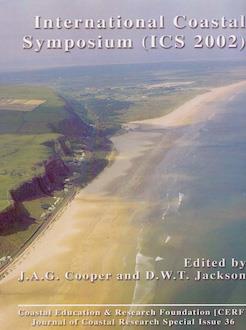Wetland loss in many estuaries around the world, has been attributed mainly to undermining and collapse of channel banks. This study aims to quantify bank erosion and vertical erosion/accretion rates on intertidal sediments in the Odiel tidal marshes (SW Spain). Bi-monthly erosion/accretion measurements were taken on eight channels over a four year period, using markers (iron stakes) located on intertidal areas and on eroding banks. The intensity of erosion divides the Odiel marshes into two zones. The northern zone has low erosion rates (horizontal erosion c. −20 cm year−1 and vertical erosion / accretion between 0 and −1 cm year−1), and coincides with low levels of human activities. The southern zone has higher erosion rates (horizontal erosion c. −25 cm year−1 and vertical erosion / accretion between 0 and −5 cm year−1) and exhibits higher levels of anthropogenic pressure. The highest horizontal and vertical erosion rates (c. −80 cm year−1) were recorded on navigation channels. Horizontal and vertical erosion showed a positive linear relationship (r2 = 0.66; P< 0.01), indicating that sediments mobilized by bank erosion are not deposited on adjacent intertidal areas. Erosion led to mature marsh habitat loss of c. 17000 m2 year−1 and a sediment mobilization of c. 16500 m3 year−1.
How to translate text using browser tools
1 March 2002
Wetland Loss by Erosion in Odiel Marshes (SW Spain)
J.M. Castillo,
A.E. Rubio-Casal,
C.J. Luque,
F.J. Nieva,
M.E. Figueroa

Journal of Coastal Research
Vol. 36 • No. sp1
Spring 2002
Vol. 36 • No. sp1
Spring 2002
accretion
anthropogenic pressure
bank erosion
intertidal plain
Spartina maritima




